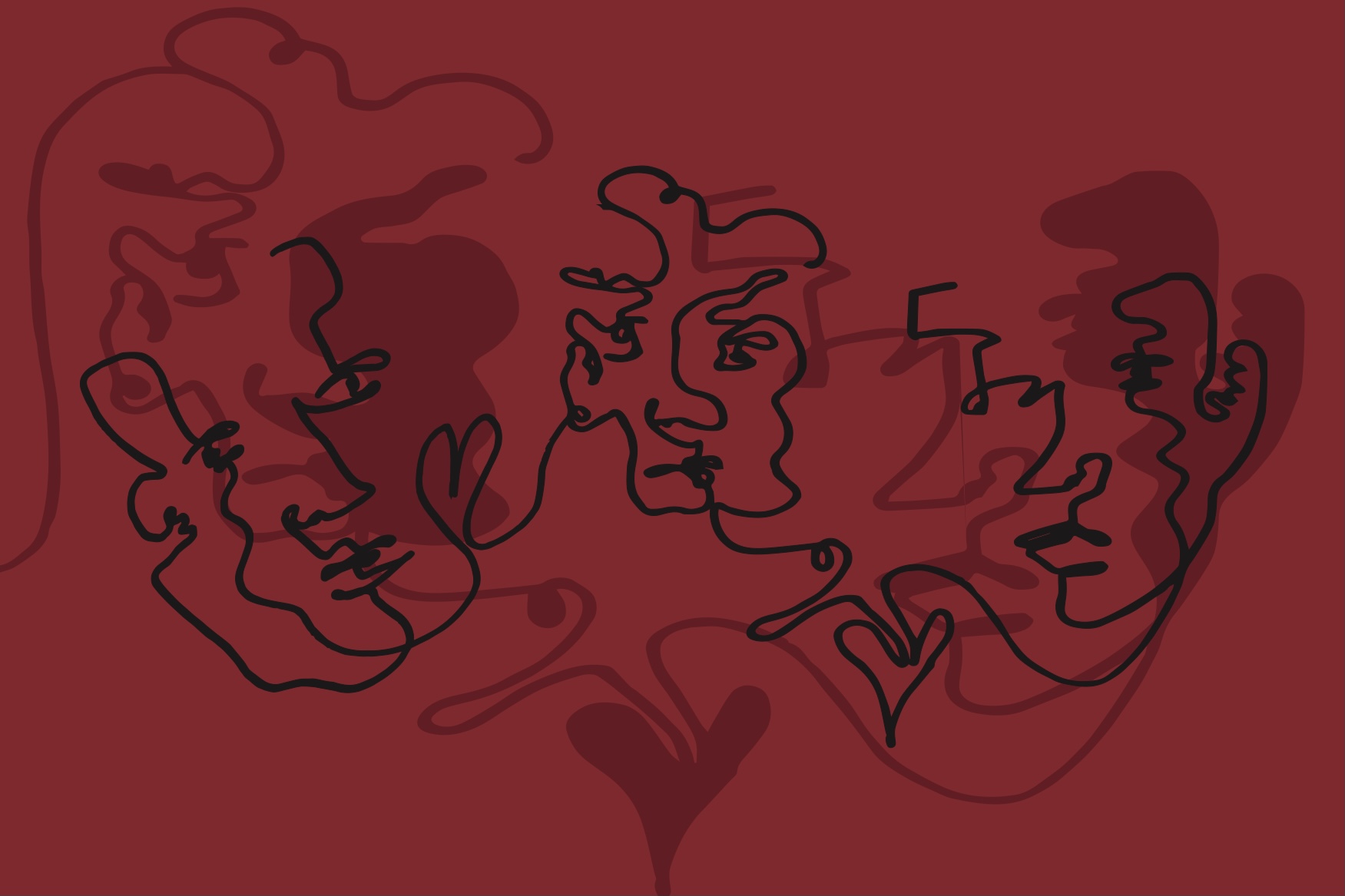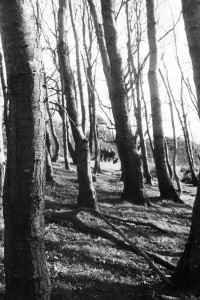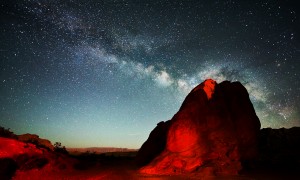
Desire in Love
by S. Luke Doughty | January 10, 2021
I waxed fiction out of reality at a young age, after my father gave me advice for dealing with life’s vicissitudes: “Pretend you’re the protagonist in a story. Create a world around you to make you feel less alone.” When my family moved from Indiana to Texas, I transformed our new town into something more captivating. Texarkana, I thought, was both a portmanteau of Texas and Arkansas, as well as a metonym of the United States: split down the middle, it had two mayors, legal systems, and two histories. With Keatsian negative capability, I tried to reconcile two disparate things to create something beautiful.
Earlier that year, Texarkana’s dualism had become a metaphor for something else. When I came out as bisexual, the straight character that I had spent decades constructing had cracked. With this newfound identity, I viewed myself not only as the author of my present fictions, but also as a critic of my former ones. Sam See—the late literary critic who taught at Yale, and the author whom I explored during the summer we moved—wrote that “For [Leo] Bersani, the realist novel desires yet betrays history by pretending to love it. ‘[R]ealistic fiction proudly advertises its fidelity to history: it documents the ways in which a particular time and a particular place determine the nature of human desires and the field in which they may be realized’”. Almost opposite to realistic fiction’s dubious relationship to the past, I was openly hostile to mine, and the past self who made my sexual truth unconscionable. I rebuked the years when he—an untrustworthy amanuensis—constructed a straight protagonist for an interpellating audience. In other words, I finally retaliated against society’s control over my own story.
When I wasn’t reading See that summer, I was falling for a local boy named Eli Depson, who became my first boyfriend. He widened the lacunae in the pages of my old story. “Love is the pleasure of ignorance: the pleasure of renouncing our desire to fill the hole of knowledge”, writes See. When Eli and I acknowledged our mutual queer falling in love, we unlocked a way of unknowing ourselves and each other. The ensuing relationship meant un-writing our dramatis personae: personalities, affective dispositions, imagined futures, vices. Love with Eli became my pleasure of Keats’s negative capability, another concept I had learned from my father. Dad explained Keats’s idea to me as the ability to sustain judgment, to refrain from reaching a conclusion, or to entertain the possibility of two contradictions co-existing. I suppose this type of thinking is what made my sexual denial possible for so long.
Eli and I had spent years of our lives raising questions and avoiding answers about ourselves. When Eli finally answered the most important one for himself, his family kicked him out of his home. I was more privileged during adolescence, but for some reason, that meant that I asked my question for longer. Regarding my sexuality, I became comfortable on the margin of reality and fiction, living in a negative space of knowledge—of denial of self, a limbo of phenomenon and knowledge that lasted for years. My interest in fiction had less to do with the quality of my father’s advice and more to do with my commitment to running from truth that would cause pain, not pleasure. Now, when people insist on my homosexuality, and find my bisexuality dubious, I hold onto my ambiguous identity. This is incredulous even for me at times, even though I have always lived within unidentifiable liminal spaces.
On our first date, Eli and I went swimming with my family. We were both anxious to be around my parents in particular. He handled nerves differently from me. I shut down; he became more outgoing. This was a difference we accepted about each other. Our distinctions were a point of excitement, not a cause for fighting. Eli’s extroversion led him to kiss me. That moment, which I hadn’t anticipated, became a spontaneous and critical venture of unknowing my past as a straight man, and giving my family an opportunity to unlearn me as well. For one, the situation asked me to reconsider my boundaries for public displays of affection now that they felt like outlawed behaviour. The interpellators in my head shouted loudly, accosting me for what felt like supremely unsexy actions. Moments like that kept happening.
Performances of queer love shattered the artifice I had used to design my life. Altering my sense of self also changed the hermeneutics I used to understand my past—such as the tropes of strength, invincibility, and worthiness. The topoi of the hetero-normative timeline I had fashioned (fall in love with a woman, get married after college, have kids) also seemed to stay behind in Indiana. I lost touch with old archetypes that I had used to construct my character and those whom I dated: the stoic, troubled boy with a flat, unreadable and unknowable expression, and an equally monotone and neutral voice. Of course, these losses ended any affective familiarity wrought from hetero-normative aesthetics: the normal, the known, the predictable, the comfortable. The fictions of white Protestantism had defined me. In its wake came the fiction of my bisexuality, which at least held more personal truth.
Each display of queer desire in front of others made us giddy at how strange we were becoming. To borrow Bersani’s words, our “lying holes” became “lying wholes”. The aporias of our past fictions—the obstreperous ironies and contradictions of our straight narratives that we often failed to fill—had finally fractured any cohesive narratives of our selves. This artistic self-shattering happened at the same time as my physical shattering, with Eli, which created a sort of death.
That process enabled me to understand what See meant when he suggested that ideal love has been deemed critically bankrupt, and that it has been somewhat divorced from desire. He explains thatdesire is about pain from ignorance of someone or someplace, while love is about pleasure of ignorance of someone and someplace. Yet my relationship to Eli reunited love and desire, I think, because our desire became a love in remaining strangers. As queer people, our very attraction to men is what had made us unrecognizable to ourselves for most of our lives. Now, with every touch or conversation we kill each other’s poetical self. Since exercises in negative capability felt right, acting on these desires gave us love for each other’s overwhelming and unknowable complexity.
See notes that love has the unique ability to shatter our sensual bodies, matched only by death’s ability to do so. That death and love work on the body similarly explains why the two have often been invoked together in literature: Orpheus loved Eurydice, ironically, in Hell, a place that arguably rebukes love. Ovid’s golden arrow in the Apollo and Daphne myth shot from the same bow that, moments later, would ironically fire a deterrent—a leaden arrow, which functioned as a contraceptive, an antithesis to love.
Cupid in particular, love incarnate during an ancient time when love and desire collapsed together, further defined love by its dramatic opposites in various myth cycles. In Amores, or poems about love, Cupid steals a foot of Ovid’s meter, forcing the poet, dramatically and hilariously, to abandon his charge to write about war, and instead to write about love:
arma gravi numero violentaque bella parabam
edere materia conviente modis.
par erat inferior versus–risisse Cupido
dicitur atque unum surripuisse pedem.
Just now, I was preparing to start with heavy fighting
And violent war, with a measure to fit the matter.
Good enough for lesser verse–laughed Cupid
So they say, and stole a foot away.
These stories made me wonder if, throughout history, there was ever the possibility of love between men at war. I thought of See and his husband. After an altercation between the two in 2013, See was arrested and soon mysteriously died in his jail cell. He left behind his criticism about love, queerness, and fiction—as well as a group of distraught colleagues, whom I have to thank for publishing his works. It was See’s writing, shortly after I came out, that helped me understand how conflict within myself could create its ostensible antithesis.
That love and violence have often arrived together in both life and literature seems too frequent to be a coincidence. It is Cupid who turns violent when his lover, Psyche, peeks at him in the middle of the night. In that moment, Psyche’s shattered image of Cupid seems to inflect ideal love – that which celebrates the unknown – into something almost its opposite. Psyche couldn’t help but know her Cupid, as Orpheus couldn’t help but know Eurydice, and it destroyed them. This is the very tension See draws out: desire is pain from ignorance, while love is the opposite. Yet Eli and I, desire in love, died delightfully, unlike these classical examples, by each other, and because of our ignorance.
If I have learned anything through my rediscoveries, it is that I am presently defined in part by my past, yes, but also by what I make with it, the way I interpret it, the ownership I take of it, and the undoing I do to it, with others who have an abiding pleasure in such things. See feels like one of those people to me. His personal life and professional enterprises bled together; interests in intimate sensations (sex, death) and phenomena (love, desire) superimposed onto the way he taught history and studied literature. He seemed to think, through our intransigent acts as queer men, that we could heighten our discretion as authors of ourselves and the world, that we could thrive in contradictions—which don’t make sense to others—by embracing our own logics. ■
Words by S. Luke Doughty. Art by Tate Tsang.




